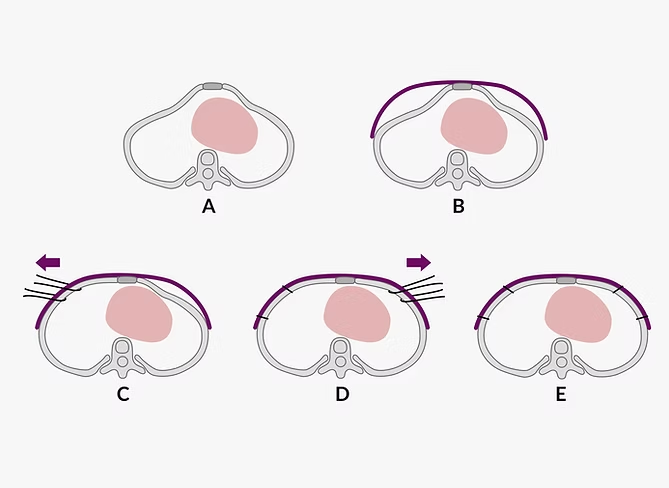Pectus carinatum deformity is a condition in which the chest wall protrudes outward, often resulting in physical and aesthetic concerns. Awareness of the causes and early pectus carinatum deformity symptoms can help parents, caregivers, and patients recognize the condition and seek appropriate guidance.
Causes Behind the Deformity
Several factors contribute to the development of pectus carinatum deformity. Congenital developmental abnormalities, occurring during fetal growth or early childhood, can cause imbalanced growth of the sternum and costal cartilage, leading to a protruding chest wall. Genetic factors also play a role, with individuals who have a family history of chest wall deformities being more susceptible. Nutritional deficiencies, particularly insufficient intake of vitamin D and calcium, may impair cartilage development and contribute to pectus carinatum deformity. Chronic illnesses, including congenital heart disease and persistent respiratory infections, can also affect chest wall growth. In some cases, trauma or prior surgical interventions may alter the structure of the chest, leading to the protrusion characteristic of the deformity.
Recognizing Symptoms and Effects
The physical presentation of pectus carinatum deformity often includes a noticeable protrusion of the sternum and irregular chest contour. While the condition may not always cause serious health issues, it can affect posture, physical activity, and psychological well-being, especially in adolescents. Families noticing these symptoms can consult specialists at The Institute of Chest Wall Surgery (ICWS), who emphasize that understanding the underlying causes is crucial for effective management. Early recognition of pectus carinatum deformity can improve outcomes, whether through non-surgical therapies or corrective procedures.
Conclusion
Awareness of the causes and symptoms of pectus carinatum deformity is essential for timely intervention. From congenital factors and genetics to nutritional deficiencies and chronic illness, multiple contributors shape the development of this chest wall condition. Institutions like The Institute of Chest Wall Surgery (ICWS) provide expert support, but recognizing the deformity and understanding its origins remains the first step toward effective management and improved quality of life.


